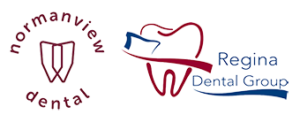Signs of a cavity and how to avoid them
According to our dentists, oral cavities are one of the most common health problems faced by the majority of patients they see. Don’t let this alarm you. Cavities are treatable and with the proper techniques you can drastically reduce the chances of you ever getting a cavity. However, do you know what the warning signs are? You may not, because a cavity is not always easy to detect right away. If left untreated, they get larger and affect deeper layers of your teeth. They can lead to a severe toothache, infection and tooth loss.
What is a cavity?
A cavity is a hole in your tooth that can get bigger and deeper over time if not properly treated.
How does a cavity develop?
When your tooth is exposed to acid frequently, this will cause the enamel to break down. As the enamel continues to break down, it allows the bacteria to cling to your teeth causing small white spots to form on your teeth. This is the first warning sign that a cavity may be developing. If the tooth decay process continues, this will form the cavity.
The Canadian Dental Association mentions that these are signs of a cavity:
- Toothaches and/or spontaneous pain
- Tooth sensitivity
- Mild to sharp pain when eating or drinking something sweet, hot or cold
- Visible holes or pits in your teeth
- Brown, black or white staining on any surface of a tooth
- Pain when you bite down
- White spots on your teeth
How to reduce the chances of getting a cavity:
- Chew Sugar Free Gum
- Consume Vitamin D
- Brush with a fluoride toothpaste
- Cut down on sugary foods and snacks
- Gently brush your gums as well to keep them healthy
- Maintain your dental regimen by sticking with your oral care schedule of visiting the dentist two times a year
How to treat a cavity
Treatment depends on how bad the cavity is. Most often, your dentist will remove the decayed portion of your tooth with a drill. They’ll then fill the hole with a filling made of either silver alloy, gold, porcelain, or a composite resin…all safe materials.
The best way to spot and properly diagnose a cavity is through regular dental exams. If you think you or a family member may have an oral cavity and you have not seen a dentist in more than six months, we highly recommend booking an appointment with at any of our locations to speak to a dental professional.
